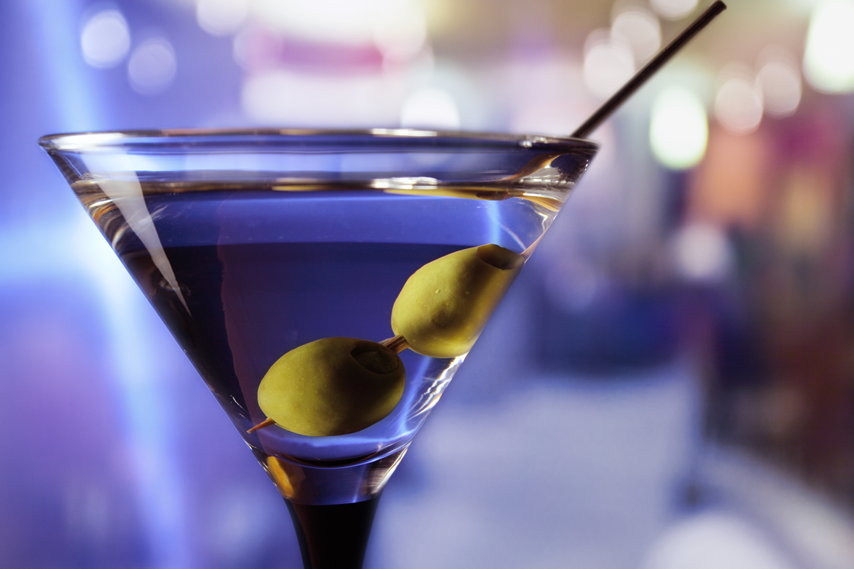A classic martini is a cocktail made with gin and vermouth combined at a ratio 2:1, stirred in a mixing glass with ice, strained into a chilled glass and garnished with an olive or a lemon twist.
Over the years the amount of vermouth steadily decreased to the point where some martinis are now made by filling a chilled glass with gin and rubbing a finger of vermouth around the rim. Some people joke that a perfect Martini should be made by filling a glass with gin, then waving it in the general direction of Italy, (vermouth is made in Italy).
“A Dirty Martini” is made by adding olive brine to the drink, and a “Perfect Martini” has equal amounts of sweet and dry vermouth. Of course, we can’t forget the Vodka Martini, made popular by James Bond, who drinks his “shaken, not stirred.” Shaking a martini dilutes the flavor and you’ll be drinking mostly water, that’s why a special spoon should be used to stir the drink without chipping the ice. So my advice is to order your martini “stirred, not shaken.”
The legend of the cocktail’s origin suggests that in 1894 a miner during the California Gold Rush struck it rich and wanted to celebrate. He was on his way to San Francisco and stopped in a town called Martinez, walked into the first bar he saw and asked for champagne. Champagne was not available, so an enterprising bartender served him what was on hand (gin and vermouth) and called it a “Martinez Special.” The miner loved the drink and ordered it for the whole bar.
Some historians believe this story to be a myth and suggest that the martini was named after a brand name: Martini and Rossi Vermouth.
Regardless of its history, the main question on everyone’s mind is what’s the deal with the olives?
Dr. Ammar Martini claims that his grandfather moved from Syria to France where he ran a bar and that he was the first to use an olive to garnish the drink. It was one of the most popular exports from the Syrian province of Idlib where he grew up. That’s how the “Martinez Cocktail” became known as Martini.
Prohibition fueled the martini’s prominence, as illegal gin manufacture was on the rise in the 1920s. At this time more and more bartenders started to add olives to the drink. It’s quite possible that olives were added to hide the bitter taste of the poor quality alcohol. Don’t forget that vermouth is a type of wine, and if not stored properly, it goes bitter, so adding a salty element would’ve made the drink more agreeable. Even as spirit production improved after prohibition, bars may have preferred to use olives to hide the relatively poor quality of their well spirits, allowing them to charge more for a cheaper cocktail.
In the 1950s, “Martini Lunches” became a popular theme of the splashy Mad Men era. The picture of the olive in a Martini glass became one of the most iconic images of the 50s’ pop culture.
As with many things behind the bar, olives are used today largely because they’re iconic. Some say the olive is the best part of a martini. Martini drinkers often claim that garnishing the beverage with olives gives it an extra kick of flavor. Sicilian olives are the choice olives used by bartenders today.
Recipes that call for cocktail onions instead of olives do not make a true martini; they make a Gibson. The olive garnish is what makes the martini. So don’t forget to ask for your martini stirred and add no more than three olives as a garnish!

